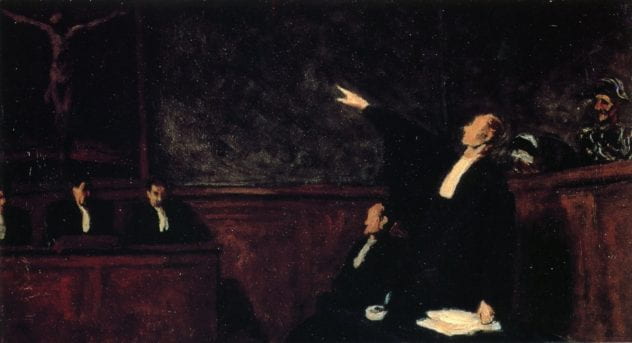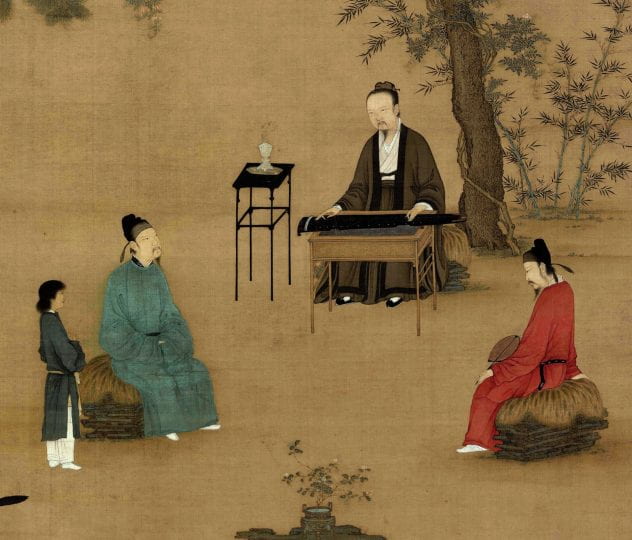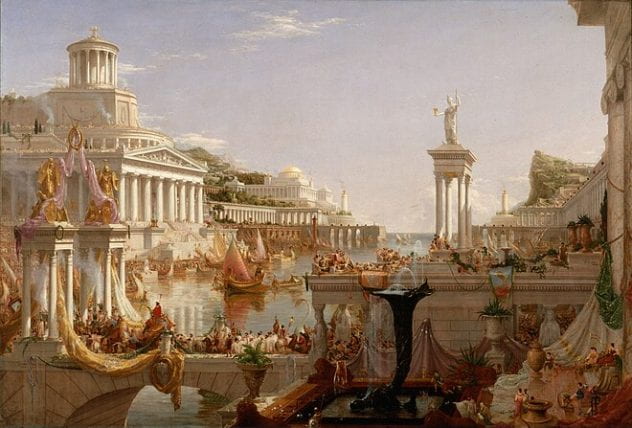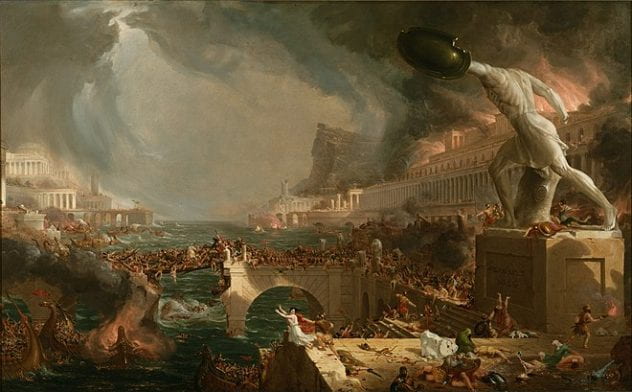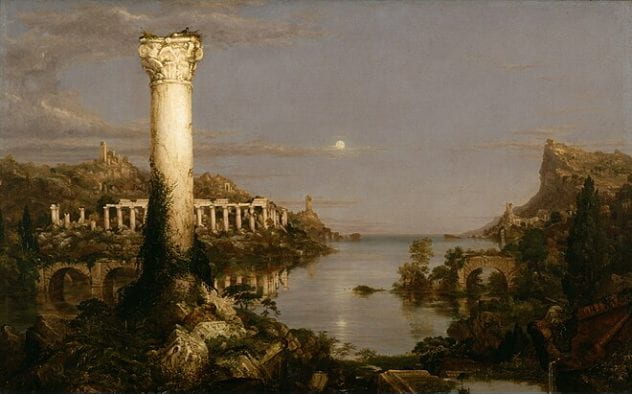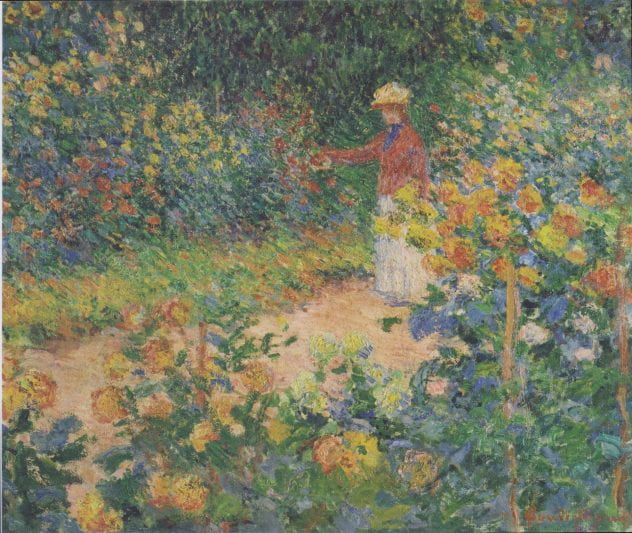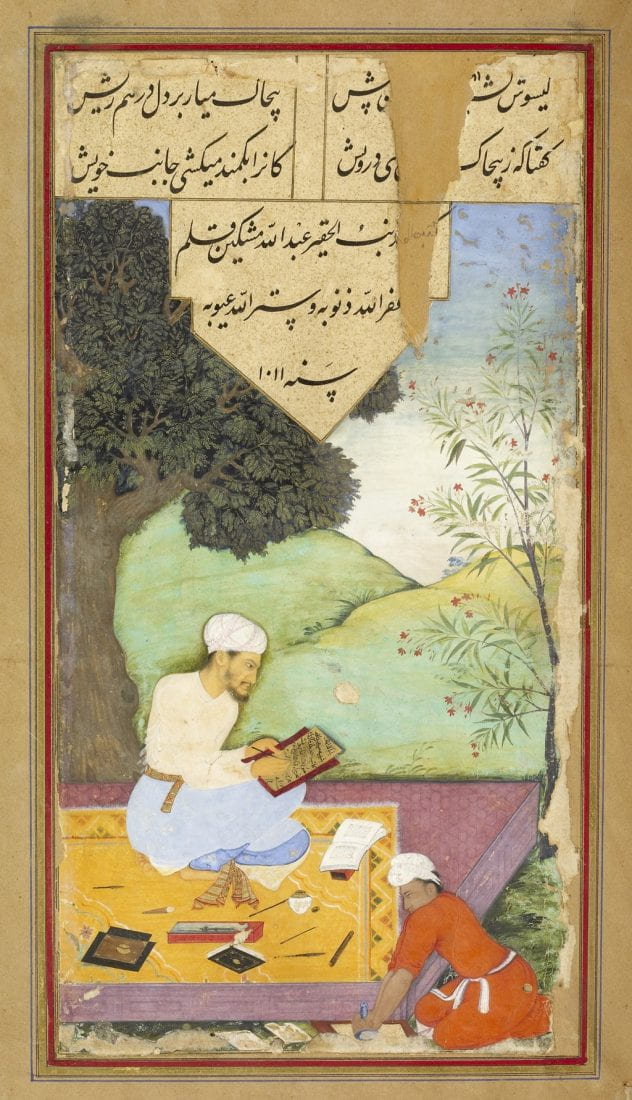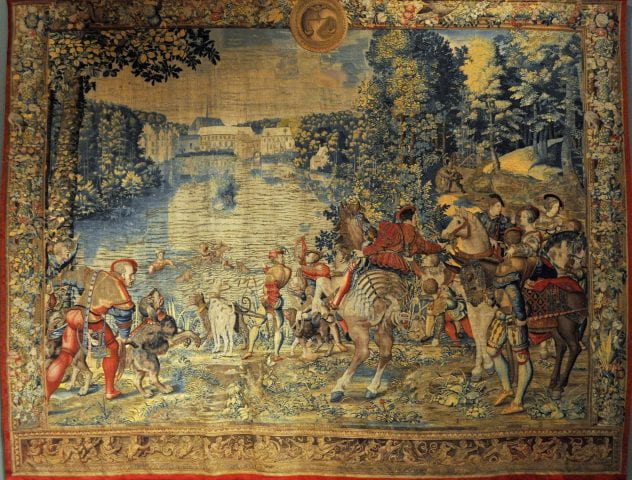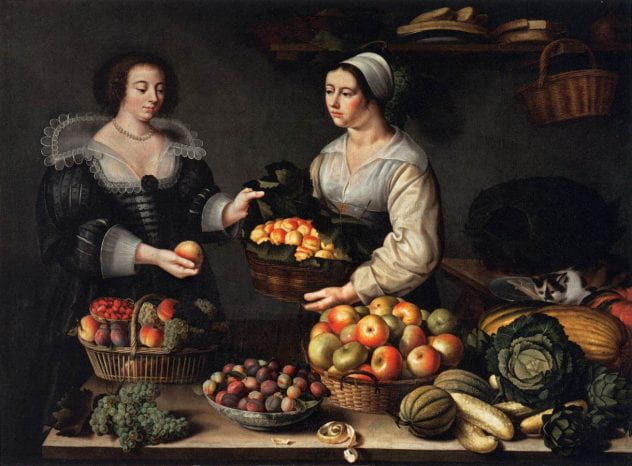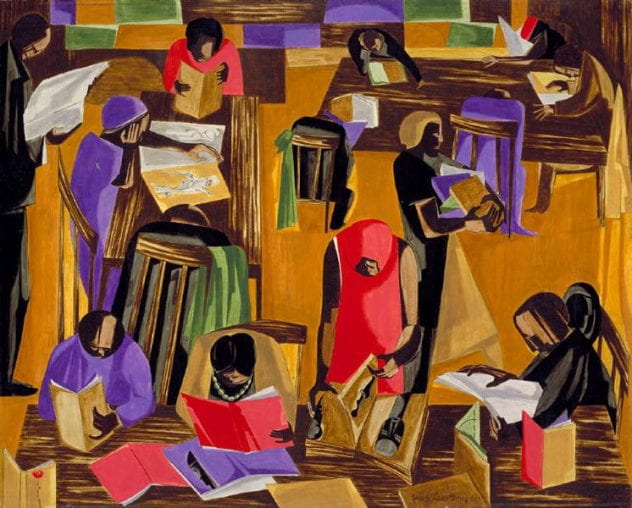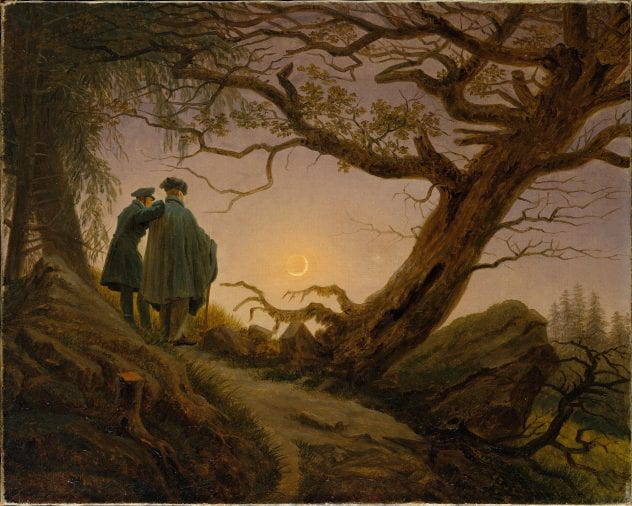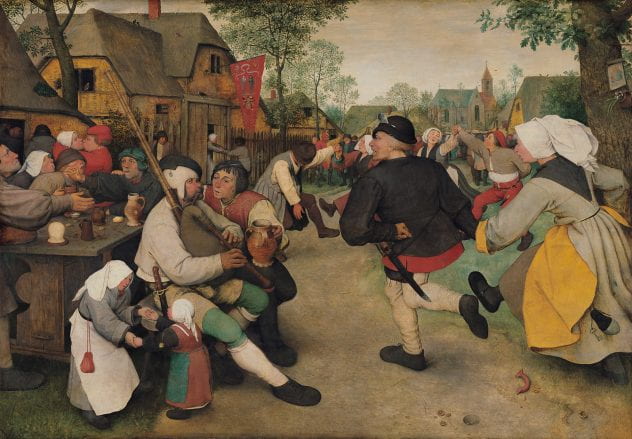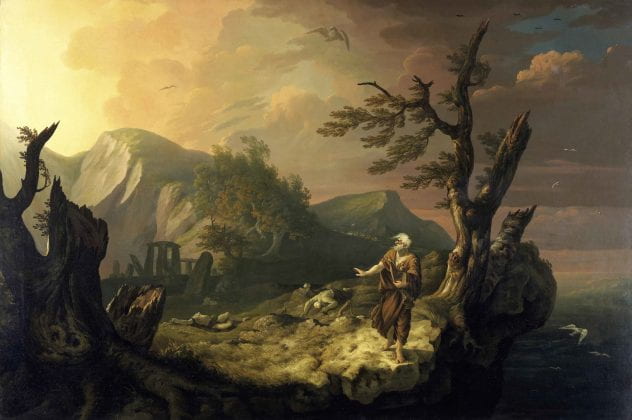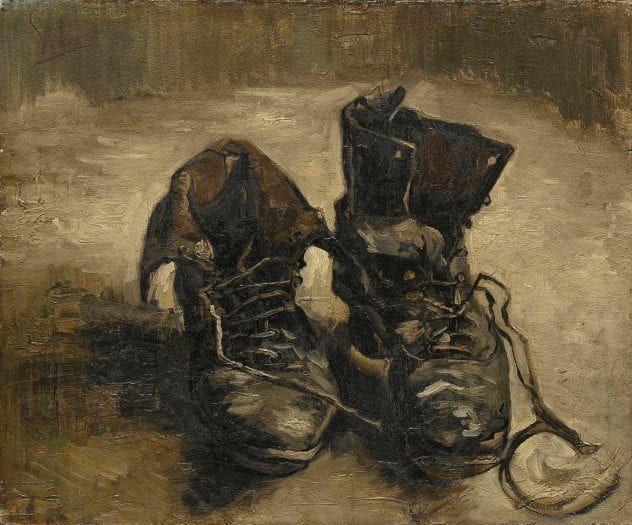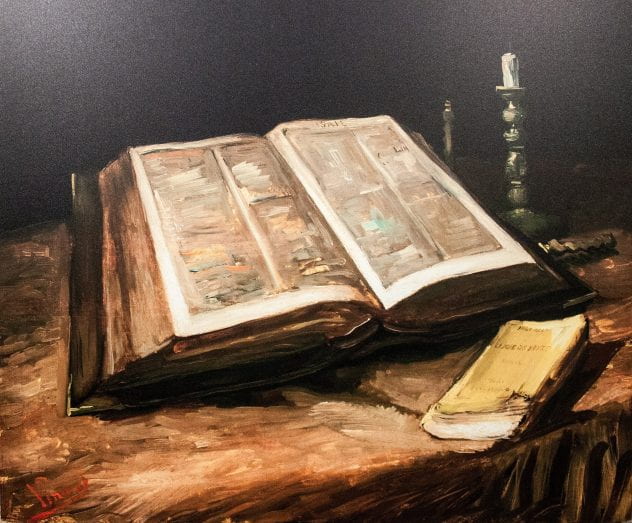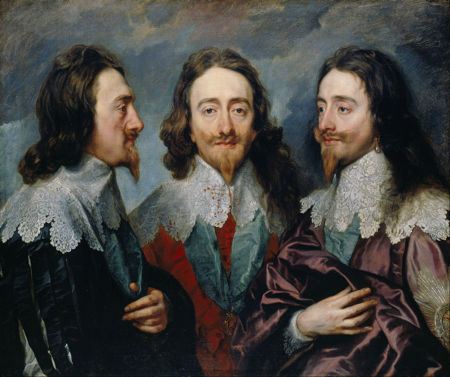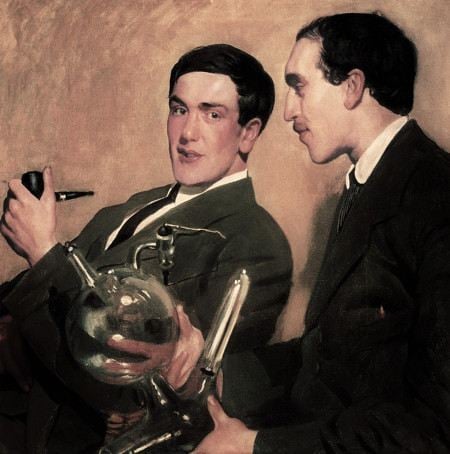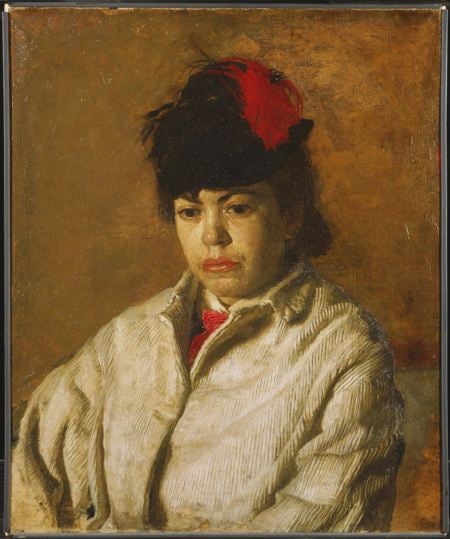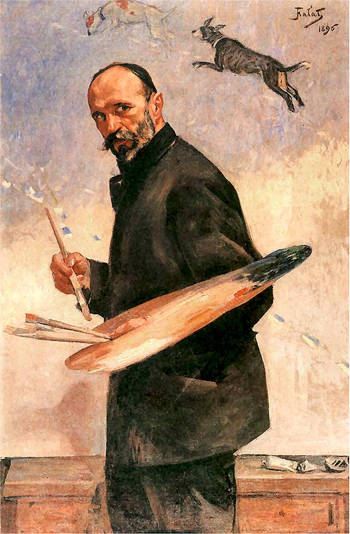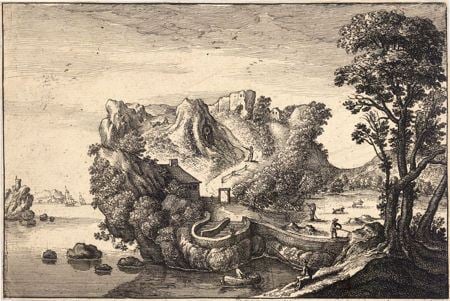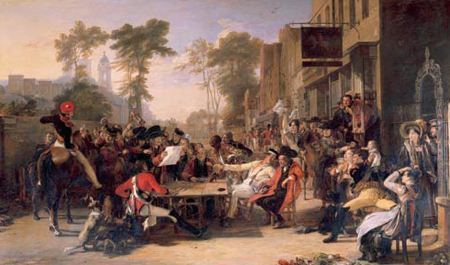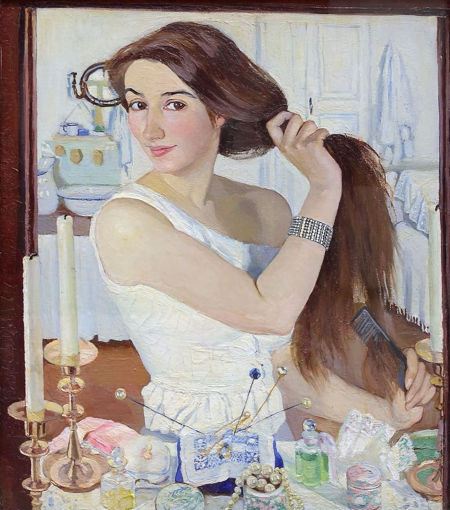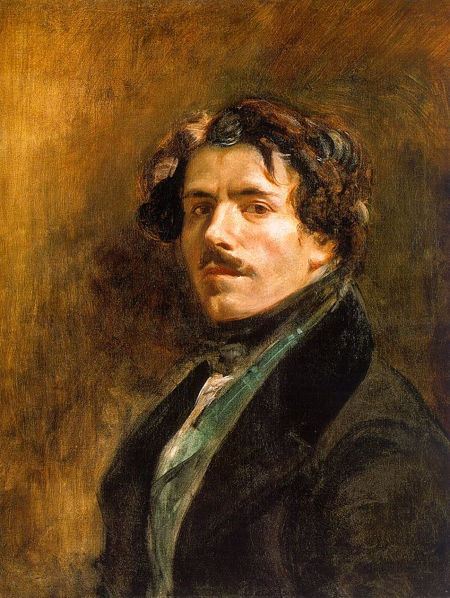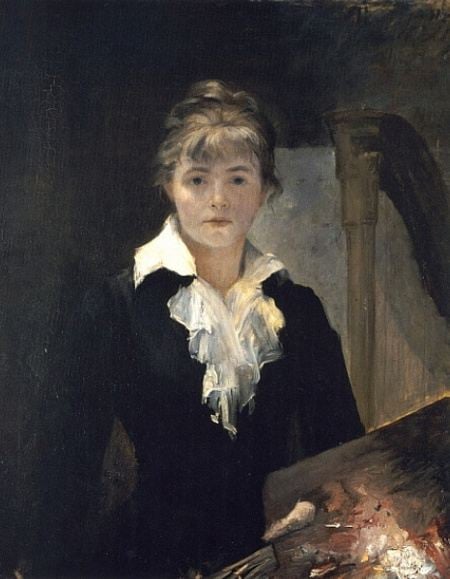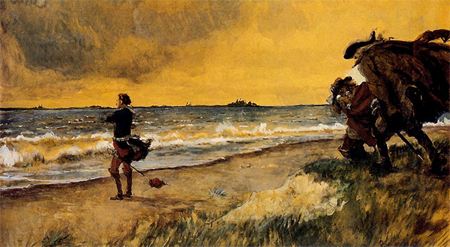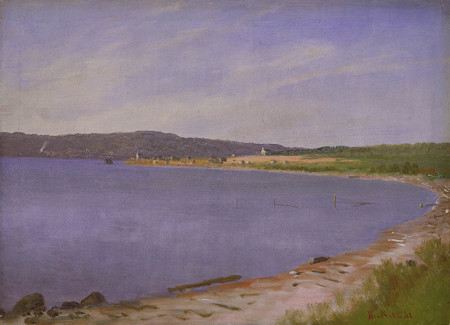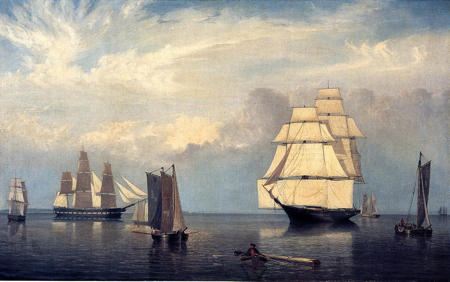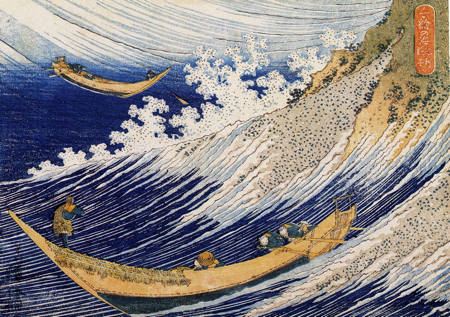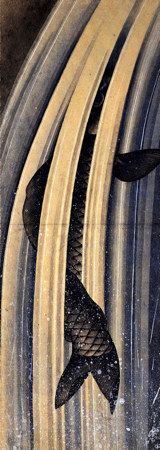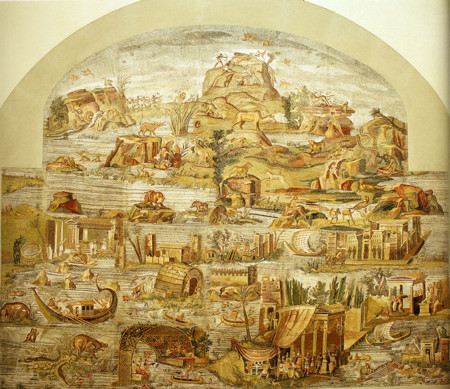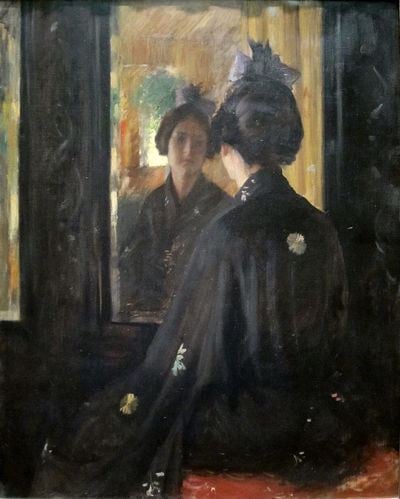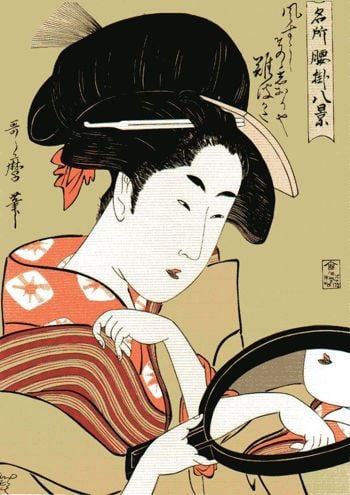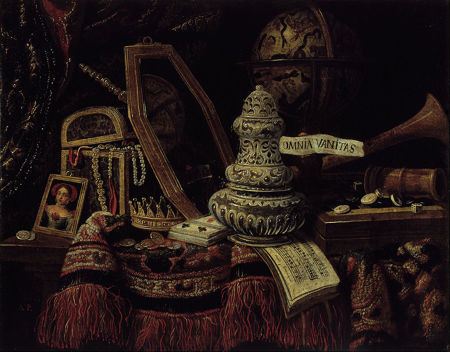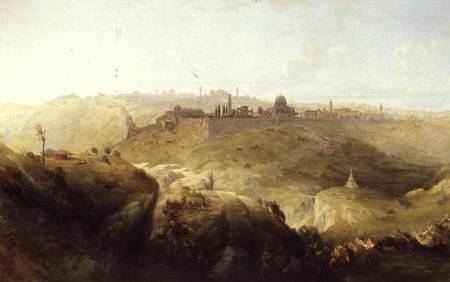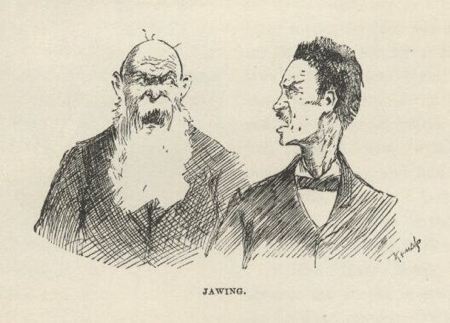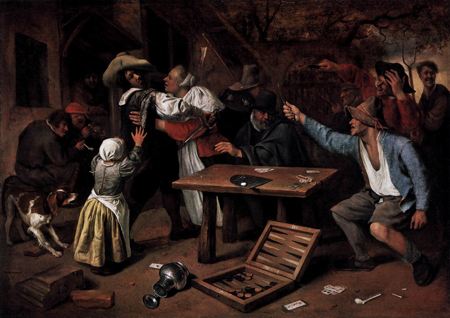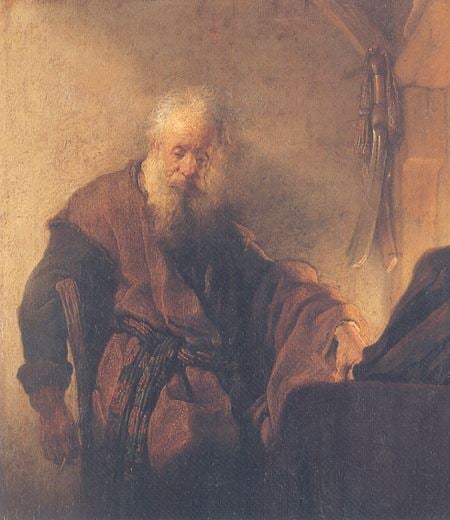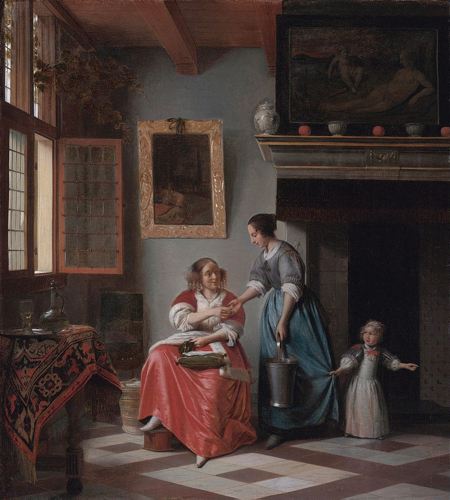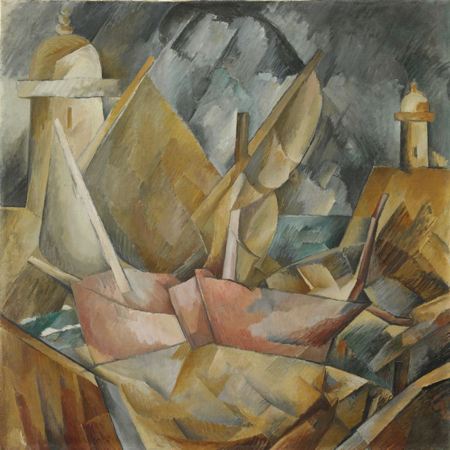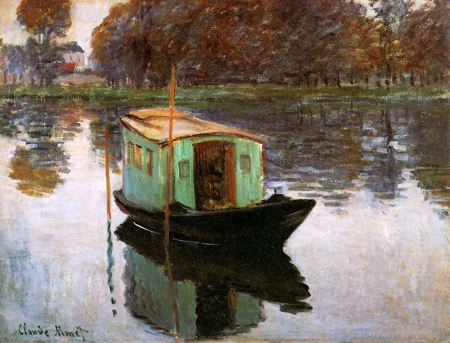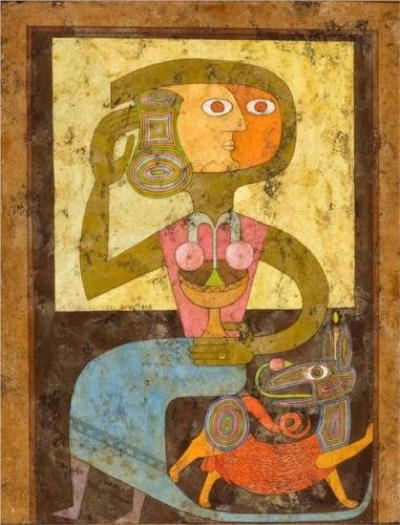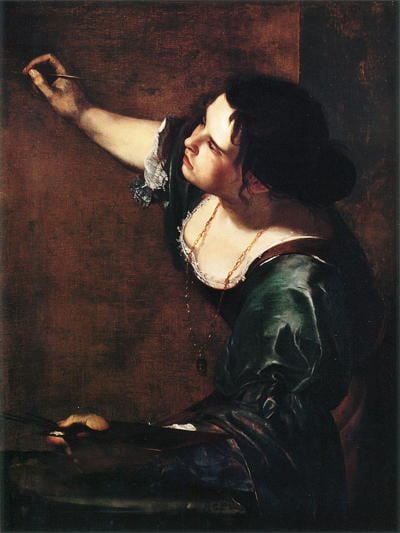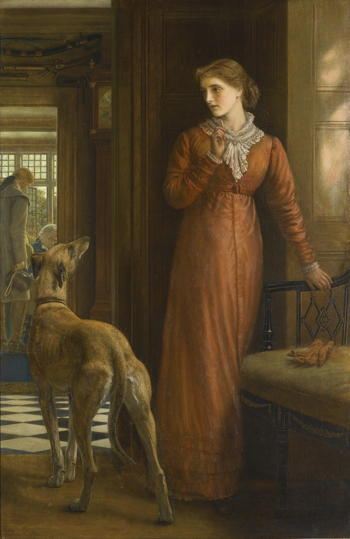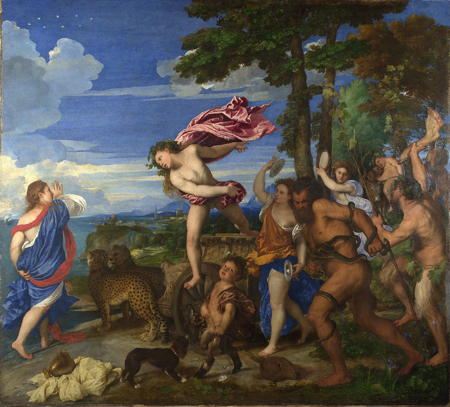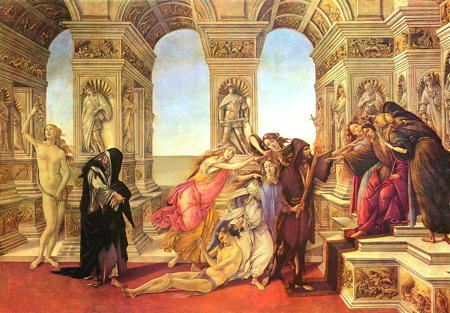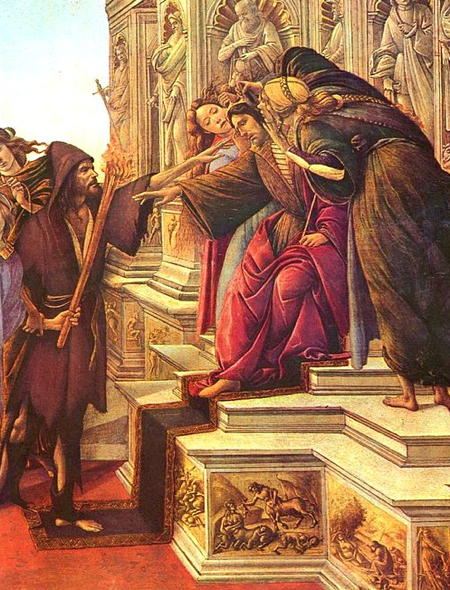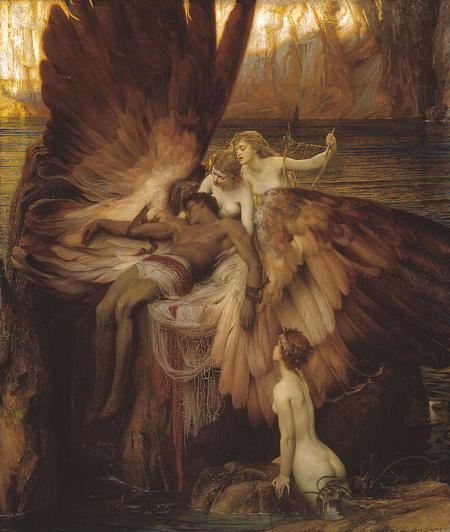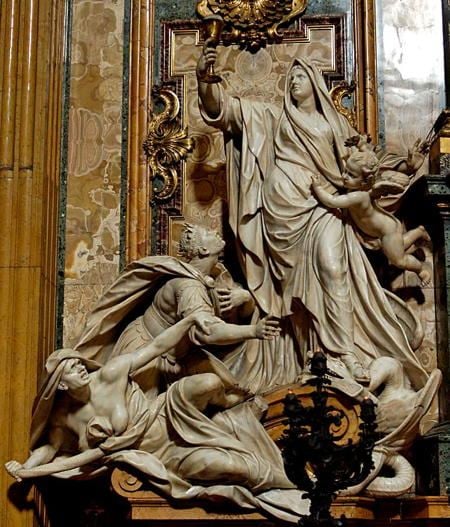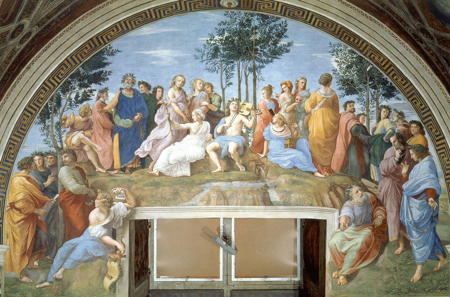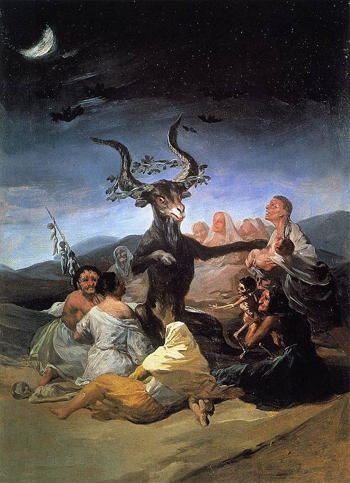Symphony No. 8 in C Minor, WAB. 108_ II. Scherzo (Allegro moderato) Trio
Anton Bruckner
Staatskeppelle Dresden, Eugene Jochum
The Letter of the Law
The Court
Honoré Daumier
https://www.wikiart.org/en/honore-daumier/the-court
There is a way law and literature are connected. The same language used to write literature is used to write law; law uses the language literature grows. Time changes the meaning of words and in law words must be understood not as they are today but as they were understood when the law was written. There are conservative justices on the courts that limit the language of law to what it meant at the time it was written, considering less the principles the law was trying to capture and codify, where more liberal justices try to place a greater emphasis on those principles. If a word like “privacy” meant something different once upon a time or does not appear in law written once upon a time does that mean that there is no right to privacy. The first and fourth amendments of the U. S. Constitution are understood by some to provide guarantees of privacy, but the word privacy is not used. But some believe it to be implied in the language of the amendments. Some think there is no such implication, or if it is implied it is in a limited way. How do we apply 18th century thought to a 21st century world? How do we keep some from interpreting the language to support their privacy but not the privacy of others? Language and the understanding of language is complicated. I had a professor in college who did not believe we could understand the language of an earlier age in our own day, that over time language becomes meaningless, or at least meaningless to those outside the time it was written. If this is true, is it possible to interpret the laws made by those, not just hundreds of years ago, but of people a generation or two ago?
On the other hand, language is inherently ambiguous while law strives to remove ambiguity. Anne Bradstreet for example, in her poem “The Flesh and the Spirit” is dismissive of gold and jewels assigning them no value, they are trash. But she describes the City of God, where she hopes to spend eternity, as having streets of gold. She writes:
My garments are not silk nor gold,
Nor such like trash which Earth doth hold,
But Royal Robes I shall have on,
More glorious than the glist’ring Sun.
My Crown not Diamonds, Pearls, and gold,
But such as Angels’ heads infold.
She then goes on to describe the City of God:
The stately Walls both high and trong
Are made of precious Jasper stone,
The Gates of Pearl, both rich and clear,
And Angels are for Porters there.
The Streets thereof transparent gold
Such as no Eye did e’re behold.
A Crystal River there doth run
Which doth proceed from the Lamb’s Throne.
Granted, the gold and gems referred to in the second passage are not literal, but metaphorical, but it is one way in which ambiguity finds its way into language. For another example, Herman Melville wrote, “Faith and philosophy are air, but events are brass.” He put more value in what we do than in what we think. But if we look at “air” not as “hot air,” wind and nothing else, but as essential to life and if we look at “brass” not as a solid substantial metal, but as a “cheap metal” with little value, as opposed to “gold” for example, than the interpretation is faith and philosophy are essential and actions are meaningless, more like a “clanging cymbal.” Though it might be fairer to say that faith and philosophy motivate events, motivate actions, that what we do reflects what we think and believe. Context may provide clarity, though it does not always, but still the problem persists.
But there is another side to law and language. Robert Spoo wrote (Can Literature Cure Law? Should It?):
Some scholars have believed that literature can make things happen within the theory and practice of law. Scholars of this movement prescribed literature and literary sensibility for curing the occupational solipsism purportedly induced by legal education and practice. If students read Sophocles’s Antigone, this school maintained, they could acquire a sensitivity to norms and values that are not captured by statutes and executive orders. If they studied Kafka, they would come to see faceless bureaucracy and capitalism as enemies of social justice. If they attended to the literary qualities of judicial opinions by Cardozo and Learned Hand, they could glimpse the humanistic textures present even when an official was decreeing a redisposition of life, liberty, or property.
There is truth to this, but how far can it be taken. What is prescribed is a kind of legal interpretation that is perhaps more personal ethics and opinion than it is the rule of law. Spoo goes on to say “The most penetrating scholarship today recognizes law’s historical heft within literature’s texts and contexts; it views law and literature as historically contiguous and analytically adjacent. It doesn’t seek to lose law to gain literature or to anaesthetize literature’s unruly forms in order to extract law’s lessons.” Literature and law have different jobs to do, but when law is written with more of a sense of the possibilities of language, we get a law that is perhaps more just, but also more powerful and perhaps also more persuasive. But it is also true that the law is the law whether it persuades or not. I enjoy the character of Jaggers in Dickens’s Great Expectations. In a conversation with folks in a pub discussing a crime of the day he makes an eloquent defense of the principle of “innocent until judged to be guilty” by a jury. Rumpole of the Bailey was asked by one of his colleagues how he could defend someone who is clearly guilty. He responded by saying “I cannot know that until a jury tells me so.” These two passages from literature illustrate well our belief in a legal system that assumes innocence until guilt has been demonstrated to the satisfaction of a jury. Even for people we do not particularly like and see as rather lawless.
Song Dynasty officials listening to guqin.
Anonymous
Then there is a different kind of “law,” one that governs language and its use, the rules of grammar. John McWhorter in discussing the March Sisters in Little Women considers how “proper language” is not always proper, at least not by modern sentiments. In “‘Little Women’ and the Art of Breaking Grammatical Rules” he writes, “I’d like to dismantle the powerful but hopeless idea that language is something to be judged rather than observed. It can be hard to process, within the bounds of our lifetimes, the randomness of our take on what “proper” language is.” He goes on to point out “I always notice how characters talk, and one thing that sticks out about the March sisters is how often these ladies use “ain’t” in ways that their modern New England equivalents would not.” What we call improper English is not always improper. I remember reading a novel of Henry James (I think it was Daisy Miller, but I am not sure) and being taken aback when a character who would have known better, used the word “ain’t.” Just as words and their meanings change over time, so do grammar rules. We are less concerned with ending sentences with prepositions, using contractions in formal writing, using “their” as a first-person singular pronoun, because we do not have a first-person singular pronoun that is gender neutral.
In addition, language grows by invention. We make up words to say things we do not have words to say. Consider “artificial intelligence.” In what sense is it artificial? Is it false, fake, or insincere? These are all synonyms for “artificial.” In what sense is artificial intelligence, intelligent? I imagine some schoolteachers might consider artificial intelligence fake or false scholarship. But all this said, in the context of our time, we need a word or two that tells us the kind of thinking machines do.
A class at terakoya (private educational school)
Issunshi Hanasato.
In addition to breaking the rules of grammar (or as seems more likely, not breaking them as they were at the time) Alcott wrote in a diversity of genres and styles. Brenda Wineapple in “Stifled Rage” writes of Alcott:
(A)s a woman of imagination with considerable stylistic range, Alcott composed gothic tales, short stories, satires, fantasies, adult novels, poetry, memoirs, and essays in which she wrote of female independence and its costs in a restrictive domestic circle. She was also a prolific letter writer who converted into a tart prose style much of her anguish—and anger—at the circumstances in which she found herself, as a woman, as a dutiful daughter, as a second-class citizen, and, ironically, as a best-selling author who worked hard to maintain her popularity.
The article is a review of a book of Alcott’s essays. I was unaware of her range as a writer, knowing only that she wrote Little Women and Little Men. The image I had of her was of a somewhat conventional late 19th century woman, until I read Susan Cheever’s book American Bloomsbury which told the reader that Louisa May Alcott “was ill and in a rage” when she began to write Little Women. Wineapple’s review talks about Alcott’s beginnings as a writer:
She had begun to sell stories to help support her family, and though she’d already published two in the prestigious Atlantic Monthly, she also tried her hand at teaching again, despite her hatred of it. The publisher of The Atlantic, James Fields, loaned her forty dollars to help outfit her classroom, but when she came to him with another story—according to Rosenberg, “How I Went Out to Service”—he told her bluntly, “Stick to your teaching . . . after the success of Little Women, Alcott paid back the loan, telling Fields she’d found that writing paid far better than teaching, so she’d stick to her pen. “He laughed,” she said, “& owned that he made a mistake.”
This suggests it was difficult for Alcott, as a woman, to be taken seriously as a writer. In the 2019 film Little WomenLaurie asks one of the March sisters, Amy, to marry him. Amy asks about the economics of the marriage if she says yes. Laurie responds saying we’re talking about love not money. Amy replies:
“Well. I’m not a poet, I’m just a woman. And as a woman, I have no way to make money, not enough to earn a living and support my family. Even if I had my own money, which I don’t, it would belong to my husband the minute we were married. If we had children they would belong to him, not me. They would be his property. So don’t sit there and tell me that marriage isn’t an economic proposition, because it is. It may not be for you but it most certainly is for me.”
Alcott didn’t write this, Greta Gerwig, the film’s director and script writer, wrote this. But I can imagine Alcott thinking this, she certainly expressed sentiments like this. In light of the difficulties women had earning their own living, it does not surprise me that she mastered several fictional forms. I was a bit surprised to find that she was an accomplished essayist as well as a storyteller, though even in the context of her time this should not have been surprising.
One thing that fascinates me about Alcott’s compositional range is that she had to master the language of each style. Perhaps that is not as significant a thing as I imagine, but the vocabulary of books about children, with children as readers in mind, would use a very different vocabulary from gothic tales and other kinds of stories with adult readers in mind, though this may say more about the range (or lack of range) of my vocabulary than the expansiveness of hers.
Course of Empire (Series of Paintings)
Thomas Coles
https://en.wikipedia.org/wiki/The_Course_of_Empire_%28paintings%29
The five paintings above are a series by Thomas Coles that suggests the life and death of empires, and to a certain degree the cultures that shaped them. Though cultures die, the work of culture often survives, even some of its architecture may survive, Roman Aqueducts and the Coliseum, for example. Some of its visual arts, paintings and sculptures also survive, consider the Elgin Marbles. Lord Byron said of their being removed from the Parthenon:
But who, of all the plunderers of yon fane
On high, where Pallas lingered, loth to flee
The latest relic of her ancient reign—
The last, the worst, dull spoiler, who was he?
Blush, Caledonia! such thy son could be!
England! I joy no child he was of thine:
Thy free-born men should spare what once was free;
Yet they could violate each saddening shrine,
And bear these altars o’er the long reluctant brine. (Childe Harold’s Pilgrimage)
But we often learn most about a culture from the literature that survives, its poems and stories. Languages do and do not survive, no one speaks Anglo Saxon or Latin, and the languages that do survive, survive in a different form. Some forms may still be readable, Shakespearean English and that of the King James Bible, but the English of Chaucer takes a bit of work to master as does, to a lesser degree, the work of Thomas Malory. Terry Eagleton in his essay “Where Does Culture Come From” says of culture:
In Jude the Obscure, Jude Fawley finds himself living in Beersheba, the area of Oxford we know as Jericho, home at the time to a community of craftsmen and artisans who maintained the fabric of the university. It doesn’t take Jude long to realise that he and his fellow craftsmen are, so to speak, the material base without which the intellectual superstructure of the colleges couldn’t exist: without their work, as he says, ‘the hard readers could not read, nor the high thinkers live.’ He comes to recognise, in a word, that the origin of culture is labour. This is true etymologically as well. One of the original meanings of the word culture is the tending of natural growth, which is to say agriculture, and a cognate word, coulter, means the blade of a plough.
We live in a time where emphasis is often placed on “elites” and one of the elites some look down on and others admire is the elite of education. The educated often, though not always, have specialized jobs that pay well and for this reason others look down on the educated because they believe the educated look down on them, which some do. Of course, we are all members of one elite or another. I was apprenticed once as a carpenter, but because the only nail I could hit was on my foreman’s thumb, I did not last long in that profession. But it taught me that we are all masters of something, a craft, a skill, a profession, that most others have not mastered and for that reason all “elites” ought to respect all the other elites.
I do not think any culture, no matter how advanced could long survive if there were not elites that could dig ditches and lay pipe (I did this once in the Negev desert in August and have great appreciation for those that do this kind of work), or elites that could run cash registers or stock shelves (as well as order and pay for what is put on those shelves). Because we are dependent on each other we ought to be more respectful of each other and the needs of each other. We live in a culture that we value so it might be worth our while to consider the origin of the word “culture” as Eagleton points out to us, that it has its origins in agriculture and gives it name, or a cognate of it, to the plow that breaks the soil so the food that nourishes us can be planted. And those that do that work are among an “elite” that is not as highly respected by many as they ought to be.
Judgment at Nuremberg
Stanley Kramer
United Artists
In the film Tolkien there is scene where Tolkien is talking to a professor about language and how it is learned. There is more of course to a culture than language, but without language it is difficult to learn much about a culture. As a culture we often refer to cultures without written records as “prehistoric.” In taking about how language is learned, the professor begins very simply He points out a tree. A child asks her father what is that? The father tells the child it is an oak tree. The child learns two words “oak” and “tree.” The child will go on to learn there are many other kinds of trees. She will also learn that “oak” will begin as the name of a tree and then take on other characterizations, an “oak table”, a ship made of “oak.” And so on. We start out knowing very little about a word, but over time many words begin to take on many attributes and additional meanings and the circumstances of their use will often provide us with a more exact understanding of the word’s meaning and reach.
We began talking about law and the influence of literature on law and how literature by shaping language shapes law and in order to understand the law we need to have a sense for the meaning of the language at the time it was written, whether that be understanding the literal meaning of the law at the time it was written or the principles communicated by the language of the law at the time it was written. But there is another aspect to language and law, how the justices that interpret the law and the judges that use the law in sentencing bring their own eloquence and sense of language to their interpretations and judgements.
In the film clip the judge, played by Spencer Tracy, is passing judgment on other judges that committed war crimes in the way they enforced and interpreted the law during the Nazi regime in Germany during World War II. These judges are charged not for failure to enforce the law, but for enforcing it. The presiding judge begins his verdict by pointing this out saying “Conscious participation in a nationwide government’s organized system of cruelty and injustice is in violation of every moral and legal principle known to all civilized nations.” The power of this verdict is not solely in stating what the crime was, but the eloquence with which it is defined, and judgement is rendered. There is value in the heinousness of the crime being underscored by the power of the language that condemns it. There may be times we have to ask ourselves if the eloquence with which a law is interpreted is, though powerfully stated, inaccurate or just plain wrong. And conversely, just because the language that interprets a law is clumsy or banal does not mean that the interpretation itself is inaccurate. Language can be misleading not only because it is used incorrectly, but also because it used so well in defending something that is wrong.
In the Garden
Claude Monet
https://en.wikipedia.org/wiki/Claude_Monet#/media/File:Monet_-_Im_Garten_-_1895.jpeg
Natalia Sylvester in “Some Words Feel Truer in Spanish” suggests the language we speak, especially when it is a second language, does not always have the best words for saying what we want to say. She points out that both languages shape each other, “We were making a new home here, same as so many immigrants who end up shaping language as much as it shapes us.” She talks about the difficulty moving between languages, finding correspondence between words in the one language in the other, “Some ideas are so embedded in Latin American and Spanish cultures that they exist implicitly. Of course, ‘ganas’ can be something you feel but also give, and be at once more tame yet more powerful than ‘desire.’ (If you know, you know.)” Of course, there may be a word in English that comes closer to Sylvester’s understanding of “ganas” that she has not yet learned. Or it may be that, like “pajamas,” it fills a space that is not yet filled in English, as Monet’s Impressionism tells us something about his garden that a more realistic rendering cannot.
Maria Popova in “The Dictionary of Obscure Sorrows”: Uncommonly Lovely Invented Words for What We Feel but Cannot Name” suggests another side of language, feelings we have we do not have words to express:
“Words are events, they do things, change things. They transform both speaker and hearer; they feed energy back and forth and amplify it. They feed understanding or emotion back and forth and amplify it,” Ursula K. Le Guin wrote in her exquisite manifesto for the magic of real human conversation. Each word is a portable cathedral in which we clarify and sanctify our experience, a reliquary and a laboratory, holding the history of our search for meaning and the pliancy of the possible future, of there being richer and deeper dimensions of experience than those we name in our surface impressions. In the roots of words we find a portal to the mycelial web of invisible connections undergirding our emotional lives — the way “sadness” shares a Latin root with “sated” and originally meant a fulness of experience, the way “holy” shares a Latin root with “whole” and has its Indo-European origins in the notion of the interleaving of all things.
Because we know their power, we ask of words to hold what we cannot hold — the complexity of experience, the polyphony of voices inside us narrating that experience, the longing for clarity amid the confusion. There is, therefore, singular disorientation to those moments when they fail us — when these prefabricated containers of language turn out too small to contain emotions at once overwhelmingly expansive and acutely specific.
We have all had the experience of not being able to find the word that accurately expresses what we are trying to say. I often suggest to students that there are many things they understand that their teachers and others think they do not understand because they do not have the vocabulary to express what they understand. They have the knowledge but not the words to communicate that knowledge, like someone who hears a symphony in their head but because they do not know the language of music, its notations and markings, they cannot put that music into a form that others, especially the musicians that would need to play it, can understand or hear.
But Popova’s point goes beyond this, to discuss areas of experience that lacks language that enables us to put that experience into words. There is a sense that we live by words, words define our perceptions of ourselves and our world. We may know what we are experiencing, but without language that defines it we are a bit at sea, we know, but we do not know. I may know what I am feeling but without the necessary language to communicate that to others I cannot be sure what that feeling or experience is.
The article is a review of a book, a dictionary, that invents words to describe the currently indescribable. For example, “dès vu (‘the awareness that this moment will become a memory’).” It is perhaps a flip side of “deja vu”. The dictionary she reviews looks to be a very interesting one. As she says, “Despite what dictionaries would have us believe, this world is still mostly undefined.” I am not sure though, that this problem can be solved by inventing what we think we might need. Language grows organically out of the needs of moments. One of the things that define a dead language as a dead language is that words are no longer being added to it as time and change make necessary. Living languages are growing languages, after all isn’t growth what defines something as “living.” I do not know if we can invent in advance our way out of linguistic needs. They need to be met by the imagination as the need arises. This is how languages grow, and they grow prodigiously. One need only compare the current edition of the Oxford English Dictionary with the first edition of that dictionary to see how many words have been added to the language in the course a hundred and some odd years, as well as the many words that have shifted or expanded their definitions. And if what one of my high school English teachers told me is true, all dictionaries are obsolete by the time they are published. Our language grows more quickly than our ability to capture it.
Portrait of the Scribe Mir ‘Abd Allah Katib in the Company of a Youth Burnishing Paper
Attributed to Nanha
